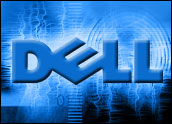
Dell’s recent launch of its “Copper” initiatives and ecosystem, which aim to develop commercialARM-based servers, proves one point: IT industry watchers love a fight, especiallywhen it pits a youthful, upstart technology against an established heavyweight vendor.
There are numerous others to choose from, but the Microsoft vs. Linux slugfest ofthe late 1990s is a case in point. Plus, that match-up is an interesting example ofhow often initial expectations of such events are essentially incorrect and changesubstantially over time.
When Linux first arose, open source aficionados suggested, often in vehement terms,that the hard-working OS with the cute little penguin mascot would eventually growmighty enough to gobble up Windows’ PC market position like so many kipperedherrings. Despite their grandiose strategizing, that never happened and most likelynever will.
However, with the help of some very interested big buddies, including Dell, IBM and HP, Linuxprospered in the data center, providing businesses viable, affordable alternatives to — andbulwarks against — Microsoft’s Windows Server. In addition, the open source developmentmodel sparked new models of collaboration — some of which inspired what we now call”social networking.” Plus, today’s fully mature Linux ecosystem is driving numerous newinnovations, including cloud computing and Big Data analysis.
Reality Check
What does any of this have to do with Dell’s “Copper”? Just as many once said Linuxcould defeat Microsoft, some today are suggesting that ARM is capable of playingDavid to the Goliath of x86-based systems. How realistic is this? About as likely asa penguin waltzing into Redmond and saying the town ain’t big enough for it and SteveBallmer.
I’m not knocking ARM. It’s a great technology with scads of market wins. In fact, ARMtoday is more mature and successful than Linux was at the time loyalists were preppingit for its prime-time prize fight.
While ARM-based servers are certainly intriguingfor certain kinds of workloads and IT infrastructures, though, ranking them out of their class orpitting them directly against Microsoft is likely to result in ARM being twisted right out of itssocket.
Which is why I’m heartened to see how Dell is approaching this issue: leveraging ARM’sproven power efficiency and system footprint features to position it as a platform forWeb front-end applications (LAMP stack — Linux, Apache, MySQL and PHP), lightweightOSes and distributed applications.
In fact, ARM support is available today or coming fromLAMP, Ubuntu, Fedora, OpenStack, Oracle Java, KVM and Hadoop.Hadoop was highlighted in Dell’s Copper announcement for a very good reason:Because of the likely interest in ARM/Hadoop solutions among the company’smyriad Data Center Systems (DCS or hyperscale) customers — including four of the fivelargest search engines, four of the five largest computing clouds, three of the four top social mediasites, and 13 of the world’s 15 most-visited websites. That not only suggests a potentially lucrativecommercial market, but also highlights the degree to which Dell’s Copper efforts arebeing driven by customers.
No Hurry
That’s a particularly interesting point. Dell has seldom been the first mover in emergingmarkets, preferring to bide its time until there are financialincentives to pursue. Yet the success of Dell’s DCS solutions — IDC has placed thecompany No. 1 in this market during 9 of the past ten quarters — suggests its moves here areworth watching.
In fact, cultivating relationships with clients and partners by providingCopper seed servers and investing in additional engineering and IP related to ARM-based systems should help Dell broaden its offerings and achieve its goal of being anend-to-end IT solutions provider.
In addition, despite the relatively low profile today of microservers — the class of systems in which ARM CPUs are generally intended to reside — many forecasts suggestthey are in for robust near-term growth. Gartner says the segment will account for15 percent (with 82 percent CAGR) of the overall server market by 2016, while Oppenheimer hasaggressively targeted a 21 percent market share (with 95 percent CAGR) in the same time frame.In other words, the work Dell is doing today with DCS customers and ARM ecosystempartners, including the Texas Advanced Computing Center (TACC) and OS/applicationdevelopers, could well lead to significant future opportunities.
Pennies From Heaven
In times of drought, it isn’t unusual for thirsty communities to try cloud seeding –dispersing copper iodide into clouds, which offers a sphere for moisture to condensearound and often triggers precipitation. While today’s data centers aren’t exactly runningdry, you could say that the initiatives related to Dell’s Copper seed servers aim tocondense customer interest around ARM-based servers in a similar way.
If those efforts succeed, Dell’s DCS customers, including those focused on cloudcomputing, could open up their IT infrastructures and pocketbooks even more to thecompany.
Initially, Copper servers aren’t likely to drive enough revenues to match thewinnings from a championship prize fight. Over time, though, ARM-based systems andservices should provide valuable experience and freshening showers of future profits forDell.






















































Social Media
See all Social Media